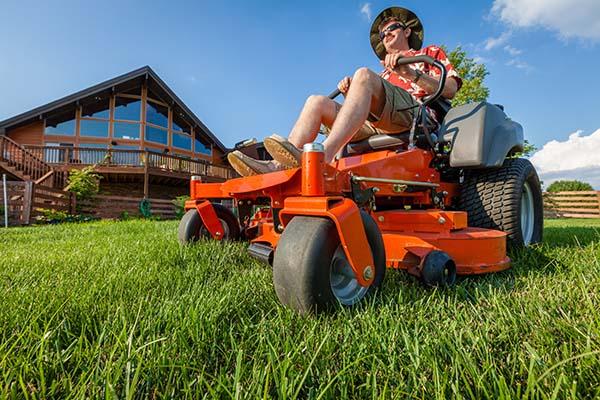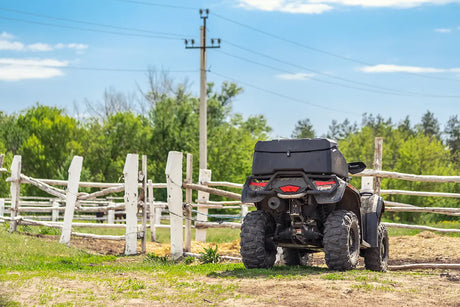There are many factors to take into consideration when looking for a replacement mower tyre. Here are a few things you should consider when it is time to replace the tyres on your lawnmower, garden tractor, or utility vehicle.
Observing Your Terrain
It is important to really take a good look at the angles of your lawn and ask yourself a few simple questions:
- Do you take pride in your lawn or do you just mow it just to keep it tidy?
- Is there any additional weight added to the mower for better traction? If so, how much has been added?
- Are there any slopes or hills that you are having trouble getting up?
- Are there any attachments being used (e.g. Blades, Brooms & Shovels, tillers, trailers)?
Choosing the correct size
The most important thing you need to know is the size of your tyre. Understanding the size may be a little confusing, but here is a quick breakdown:
An example could be 15x6.00-6. This tells you the size of this tyre when it is properly inflated.

The first number 15, refers to the approximate height of the tyre in inches.
The middle number 6.00, refers to the width of the tyre in, where 6.00 actually means 6" inches wide.
The last number, 6, is the diameter of the wheel or rim the tyre is mounted on—in this example, the rim diameter is 6 inches.
The size may be written using different symbols, but the numbers are usually always in the same order—height, width, diameter.
In some tyres, you may also see the letters “NHS” after the size. This only means that the tyre is not designed to withstand highway speeds, hence non-highway service or NHS.
Using the Correct Tread Pattern for Your Needs
The next thing you should consider is choosing the correct tread pattern.
While it may seem confusing at first, each tread has a specific purpose. The tread you choose depends on what you do with the equipment, as well as on which axle you are replacing the tyres.
If you are replacing the tyres for the front and it is not a drive axle, you may opt for a ribbed tire, sometimes referred to as a multi-rib. This tyre has circumferential grooves around the tread and will not damage the turf.

The rear or drive wheels should use a traction tire. There are many traction tyres to choose from. The one you choose should depend on how much traction you need and how important compaction of the turf is to you.
There are also one or two special treads for special purposes. A smooth tread is used for putting greens on golf courses. There is also cleated tractor-type treads used mainly for construction equipment.
Using the Correct Ply Rating
Finally, the third step to choosing a replacement tyre for your lawnmower is choosing the right ply rating.
This is the strength or load-carrying capacity of the tyre. It can be seen as 2PR, 4PR, 6PR and so on (PR means Ply Rating). It is generally a good idea to replace with the same or a higher ply rating than originally fitted.
Take note that a Ply Rating does not refer to the actual plies in a tyre but that the tyre has the strength of a 4 ply rating.

If you’ve read through this article and you are still wondering what tyre is best for your mower, send us an email at info@geotyres.com.au. We are here to help with all your tyre needs and are happy to recommend just the right tyre for your lawnmower.
View our full range of Tyres for Lawn Mowers here at GEO Tyres




